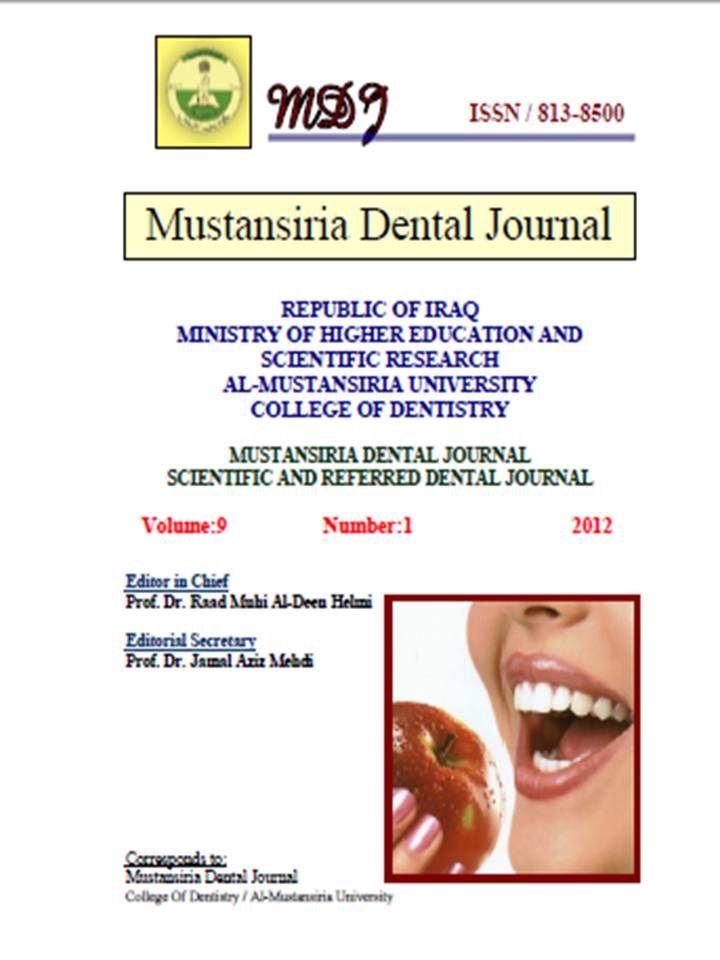Influence of post materials on the fracture resistance of endodontically treated teeth.
DOI:
https://doi.org/10.32828/mdj.v9i1.235Keywords:
Keyword: Post, Fracture resistance, Modulus of elasticityAbstract
The bending stiffness of the post should have the ability to transfer and distribute
forces and stresses in an endodontically treated tooth to prevent root fracture. The aim
of this study was to evaluative the post materials on the fracture resistance of
endodontically treated teeth restored with three types of post materials. Thirty
extracted human mandibular premolars after root canal preparation and obturation
with gutta percha; the roots were divided into three groups according to the type of
post material, group Fc restored with fiber post, group Sc restored with stainless steel
post and group Tc restored with titanium post. All teeth restored with composite
restorative material as core materials. Then all the teeth were subjected to
compressive load at 130o angle from the horizontal plan at a 5mm/min crosshead
speed until fracture. Results showed that there was a significant different between
groups in term of fracture loads (P= 0.0301). Also the fracture loads of teeth restored
with titanium post has highest mean fracture load (830N), whereas teeth restored with
Fiber post demonstrated the lowest mean fracture load (701.3N). This study
concluded that the teeth restored with metallic post were more fracture resistant than
those restored with fiber posts. But the combination of a fiber post and composite core
has the favorable mode of fracture that considered reparable, while considered
unfavorable when restored with metallic post.

Downloads
Published
Issue
Section
License
The Journal of Mustansiria Dental Journal is an open-access journal that all contents are free of charge. Articles of this journal are licensed under the terms of the Creative Commons Attribution International Public License CC-BY 4.0 (https://creativecommons.org/licenses/by/4.0/legalcode) that licensees are unrestrictly allowed to search, download, share, distribute, print, or link to the full texts of the articles, crawl them for indexing and reproduce any medium of the articles provided that they give the author(s) proper credits (citation). The journal allows the author(s) to retain the copyright of their published article.
Creative Commons-Attribution (BY)








